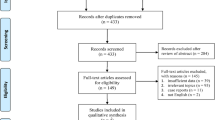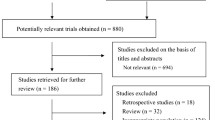Abstract
Objective
Malignant pleural effusion is a severe and common complication in patients with primary or metastatic malignancies of the pleura. Although talc pleurodesis is widely used for managing malignant pleural effusions, there is still controversy in the literature regarding its superiority compared to other approaches. We conducted this meta-analysis to further investigate its efficacy compared to alternative interventions.
Methods
We systematically reviewed the PubMed, Cochrane, and Scopus databases to identify studies that fulfilled our inclusion criteria. Study quality was evaluated using validated tools and the pooled Risk Ratio (RR) and confidence interval (CI) were calculated. We performed sensitivity analyses based on the meta-analysis method and type of study.
Results
Twenty-four studies were included in the current systematic review meta-analysis. Talc pleurodesis was associated with statistically significant higher successful pleurodesis rates when compared with all controls [RR (95% CI) 1.15 (1.00, 1.31); Pz = 0.04], only chemical controls [RR (95% CI) 1.26 (1.13, 1.40); Pz < 0.0001], and bleomycin [RR (95% CI) 1.22 (1.05, 1.42); Pz = 0.008]. The comparison between talc pleurodesis and controls at the > 1-month follow-up time point favored talc pleurodesis [RR (95% CI): 1.62 (1.15, 2.27); Pz = 0.005]. Finally, talc poudrage was associated with a statistically significant higher successful pleurodesis rate when compared with all controls. Sensitivity analyses verified the robustness of our results.
Conclusion
Talc pleurodesis is an effective MPE management approach presenting borderline statistically significant superiority compared to control methods especially compared to bleomycin as well as when pleurodesis success is evaluated later than 1 month postoperatively.







Similar content being viewed by others
References
Yeung M, Loh E-W, Tiong T-Y, Tam K-W. Indwelling pleural catheter versus talc pleurodesis for malignant pleural effusion: a meta-analysis. Clin Exp Metas. 2020;37(4):541–9.
Bibby AC, Dorn P, Psallidas I, et al. ERS/EACTS statement on the management of malignant pleural effusions. Eur J Cardiothorac Surg. 2019;55(1):116–32.
Keshishyan S, Harris K. Asymptomatic malignant pleural effusion: to observe or to manage. J Thorac Dis. 2017;9(Suppl 10):S1146–7.
American Thoracic Society. Management of malignant pleural effusions. Am J Respir Crit Care Med. 2000;162(5):1987–2001.
Porcel JM, Solé C, Salud A, Bielsa S. Prognosis of cancer with synchronous or metachronous malignant pleural effusion. Lung. 2017;195(6):775–9.
Porcel JM, Esquerda A, Vives M, Bielsa S. Etiology of pleural effusions: analysis of more than 3,000 consecutive thoracenteses. Arch Bronconeumol. 2014;50(5):161–5.
Matthay RA, Coppage L, Shaw C, Filderman AE. Malignancies metastatic to the pleura. Invest Radiol. 1990;25(5):601–19.
Interventions for the management of malignant pleural effusions: a network meta‐analysis—Clive, AO—2016|Cochrane Library. [https://www.cochranelibrary.com/cdsr/doi/https://doi.org/10.1002/14651858.CD010529.pub2/full].
Bhatnagar R, Kahan BC, Morley AJ, et al. The efficacy of indwelling pleural catheter placement versus placement plus talc sclerosant in patients with malignant pleural effusions managed exclusively as outpatients (IPC-PLUS): study protocol for a randomised controlled trial. Trials. 2015;16:48.
Boshuizen RC, Vincent AD, van den Heuvel MM. Comparison of modified Borg scale and visual analog scale dyspnea scores in predicting re-intervention after drainage of malignant pleural effusion. Support Care Cancer. 2013;21(11):3109–16.
Reddy CB, DeCamp MM, Diekemper RL, et al. Summary for clinicians: clinical practice guideline for management of malignant pleural effusions. Ann ATS. 2018;16(1):17–21.
Xia H, Wang X-J, Zhou Q, et al. Efficacy and safety of talc pleurodesis for malignant pleural effusion: a meta-analysis. PLoS ONE. 2014. https://doi.org/10.1371/journal.pone.0087060.
Roberts ME, Neville E, Berrisford RG, et al. Management of a malignant pleural effusion: British Thoracic Society pleural disease guideline 2010. Thorax. 2010;65(Suppl 2):ii32–40.
Shaw P, Agarwal R. Pleurodesis for malignant pleural effusions. Cochrane Database Syst Rev. 2004;1:CD002916.
Wang L, Deng H, Chen X, et al. Talc pleurodesis versus indwelling pleural catheter among patients with malignant pleural effusion: a meta-analysis of randomized controlled trials. World J Surg Oncol. 2020;18(1):184.
Lee P. Point: should thoracoscopic talc pleurodesis be the first choice management for malignant effusion? Yes CHEST. 2012;142(1):15–7.
Light RW. Counterpoint: should thoracoscopic talc pleurodesis be the first choice management for malignant pleural effusion? No CHEST. 2012;142(1):17–9.
Davies HE, Mishra EK, Kahan BC, et al. Effect of an indwelling pleural catheter vs chest tube and talc pleurodesis for relieving dyspnea in patients with malignant pleural effusion: the TIME2 randomized controlled trial. JAMA. 2012;307(22):2383–9.
Thomas R, Fysh ETH, Smith NA, et al. Effect of an indwelling pleural catheter vs talc pleurodesis on hospitalization days in patients with malignant pleural effusion: the AMPLE randomized clinical trial. JAMA. 2017;318(19):1903–12.
Boshuizen RC, Vd Noort V, Burgers JA, et al. A randomized controlled trial comparing indwelling pleural catheters with talc pleurodesis (NVALT-14). Lung Cancer. 2017;108:9–14.
Wells G, Shea B, O’Connell D et al. The Newcastle-Ottawa Scale (NOS) for assessing the quality of nonrandomised studies in meta-analyses.
Jadad AR, Moore RA, Carroll D, et al. Assessing the quality of reports of randomized clinical trials: is blinding necessary? Control Clin Trials. 1996;17(1):1–12.
Higgins JPT, Thompson SG. Quantifying heterogeneity in a meta-analysis. Stat Med. 2002;21(11):1539–58.
Egger M, Smith GD, Schneider M, Minder C. Bias in meta-analysis detected by a simple, graphical test. BMJ. 1997;315(7109):629–34.
Mavridis D, Salanti G. How to assess publication bias: funnel plot, trim-and-fill method and selection models. Evid-Based Mental Health. 2014;17(1):30–30.
Review Manager (RevMan), Copenhagen: The Nordic Cochrane Center, The Cochrane Collaboration, 2014.
Higgins JPT, Thomas J. Cochrane Handbook for Systematic Reviews of Interventions Version 6 [updated 2019], The Cochrane Collaboration, 2019.
Moher D, Liberati A, Tetzlaff J, et al. Preferred reporting items for systematic reviews and meta-analyses: the PRISMA statement. PLOS Med. 2009;6(7):e1000097.
Bhatnagar R, Keenan EK, Morley AJ, et al. Outpatient talc administration by indwelling pleural catheter for malignant effusion. N Engl J Med. 2018;378(14):1313–22.
Crnjac A, Sok M, Kamenik M. Impact of pleural effusion pH on the efficacy of thoracoscopic mechanical pleurodesis in patients with breast carcinoma. Eur J Cardiothorac Surg. 2004;26(2):432–6.
Das SK, Saha SK, Das A, et al. A study of comparison of efficacy and safety of talc and povidone iodine for pleurodesis of malignant pleural effusions. J Indian Med Assoc. 2008;106(9):589–90 ((592)).
Demmy TL, Gu L, Burkhalter JE, et al. Optimal management of malignant pleural effusions (results of CALGB 30102). J Natl Compr Canc Netw. 2012;10(8):975–82.
Diacon AH, Wyser C, Bolliger CT, et al. Prospective randomized comparison of thoracoscopic talc poudrage under local anesthesia versus bleomycin instillation for pleurodesis in malignant pleural effusions. Am J Respir Crit Care Med. 2000;162(4 Pt 1):1445–9.
Fentiman IS, Rubens RD, Hayward JL. Control of pleural effusions in patients with breast cancer. A randomized trial. Cancer. 1983;52(4):737–9.
Fentiman IS, Rubens RD, Hayward JL. A comparison of intracavitary talc and tetracycline for the control of pleural effusions secondary to breast cancer. Eur J Cancer Clin Oncol. 1986;22(9):1079–81.
Haddad FJ, Younes RN, Gross JL, Deheinzelin D. Pleurodesis in patients with malignant pleural effusions: talc slurry or bleomycin? Results of a prospective randomized trial. World J Surg. 2004;28(8):749–53 ((discussion 753–754)).
Hamed H, Fentiman IS, Chaudary MA, Rubens RD. Comparison of intracavitary bleomycin and talc for control of pleural effusions secondary to carcinoma of the breast. Br J Surg. 1989;76(12):1266–7.
Ibrahim IM, Dokhan AL, El-Sessy AA, Eltaweel MF. Povidone-iodine pleurodesis versus talc pleurodesis in preventing recurrence of malignant pleural effusion. J Cardiothorac Surg. 2015;10:64.
Keeratichananont W, Kaewdech A, Keeratichananont S. Efficacy and safety profile of autologous blood versus talc pleurodesis for malignant pleural effusion: a randomized controlled trial. Ther Adv Respir Dis. 2018;12:1753466618816625.
Kuzdzał J, Sładek K, Wasowski D, et al. Talc powder vs doxycycline in the control of malignant pleural effusion: a prospective, randomized trial. Med Sci Monit. 2003;9(6):PI54-59.
Mohsen TA, Zeid AAA, Meshref M, et al. Local iodine pleurodesis versus thoracoscopic talc insufflation in recurrent malignant pleural effusion: a prospective randomized control trial. Eur J Cardiothorac Surg. 2011;40(2):282–6.
Noppen M, Degreve J, Mignolet M, Vincken W. A prospective, randomised study comparing the efficacy of talc slurry and bleomycin in the treatment of malignant pleural effusions. Acta Clin Belg. 1997;52(5):258–62.
Ong KC, Indumathi V, Raghuram J, Ong YY. A comparative study of pleurodesis using talc slurry and bleomycin in the management of malignant pleural effusions. Respirology. 2000;5(2):99–103.
Paschoalini M da S, Vargas FS, Marchi E et al. Prospective randomized trial of silver nitrate vs talc slurry in pleurodesis for symptomatic malignant pleural effusions. Chest 2005; 128(2):684–689.
Rintoul RC, Ritchie AJ, Edwards JG, et al. Efficacy and cost of video-assisted thoracoscopic partial pleurectomy versus talc pleurodesis in patients with malignant pleural mesothelioma (MesoVATS): an open-label, randomised, controlled trial. Lancet. 2014;384(9948):1118–27.
Sørensen PG, Svendsen TL, Enk B. Treatment of malignant pleural effusion with drainage, with and without instillation of talc. Eur J Respir Dis. 1984;65(2):131–5.
Zimmer PW, Hill M, Casey K, et al. Prospective randomized trial of talc slurry vs bleomycin in pleurodesis for symptomatic malignant pleural effusions. Chest. 1997;112(2):430–4.
Fysh ETH, Waterer GW, Kendall PA, et al. Indwelling pleural catheters reduce inpatient days over pleurodesis for malignant pleural effusion. Chest. 2012;142(2):394–400.
Lynch T, Kalish L, Mentzer S, et al. Optimal therapy of malignant pleural effusions. Int J Oncol. 1996;8(1):183–90.
Yo SA, Mo EB, El AA, et al. Comparison between thoracoscopic pleurodesis results by talc, doxycycline poudrage, and silver nitrate slurry in patients with malignant pleural effusion. Egypt J Chest Dis Tuberc. 2020;69(1):105.
Terra RM, da Costa PB, Dela Vega AJM, Pêgo-Fernandes PM. Adverse events after pleurodesis in patients with malignant pleural effusion. J Thorac Dis. 2020;12(7):3507–13.
Davis JT, Weinstein S. Repair of the pectus deformity: results of the Ravitch approach in the current era. Ann Thorac Surg. 2004;78(2):421–6.
Iyer NP, Reddy CB, Wahidi MM, et al. Indwelling pleural catheter versus pleurodesis for malignant pleural effusions. A systematic review and meta-analysis. Ann Am Thorac Soc. 2019;16(1):124–31.
Rodriguez-Panadero F, Montes-Worboys A. Mechanisms of pleurodesis. Respir Int Rev Thorac Dis. 2012;83(2):91–8.
Yildirim H, Metintas M, Ak G, et al. Predictors of talc pleurodesis outcome in patients with malignant pleural effusions. Lung Cancer (Amsterdam, Netherlands). 2008;62(1):139–44.
Shehata S, Sileem A, El-Fakharany K. Pleural fluid CRP, LDH, and pH as predictors of successful pleurodesis in malignant pleural effusions. Egypt J Chest Dis Tuberc. 2015. https://doi.org/10.1016/j.ejcdt.2015.05.003.
Pantazopoulos I, Xanthos T, Vlachos I, et al. Pleural fluid glucose: A predictor of unsuccessful pleurodesis in a preselected cohort of patients with malignant pleural effusion. J BUON. 2014;19(4):1018–23.
Rena O, Boldorini R, Papalia E, et al. Persistent lung expansion after pleural talc poudrage in non-surgically resected malignant pleural mesothelioma. Ann Thorac Surg. 2015;99(4):1177–83.
Hassan M, Gadallah M, Mercer RM, et al. Predictors of outcome of pleurodesis in patients with malignant pleural effusion: a systematic review and meta-analysis. Expert Rev Respir Med. 2020;14(6):645–54.
Hopewell S, McDonald S, Clarke M, Egger M. Grey literature in meta-analyses of randomized trials of health care interventions. Cochrane Database Syst Rev 2007; (2):MR000010.
Funding
No funding.
Author information
Authors and Affiliations
Corresponding author
Ethics declarations
Conflict of interest
Authors declare no conflict of interest.
Additional information
Publisher's Note
Springer Nature remains neutral with regard to jurisdictional claims in published maps and institutional affiliations.
Electronic supplementary material
Below is the link to the electronic supplementary material.
Rights and permissions
About this article
Cite this article
Beltsios, E.T., Mavrovounis, G., Adamou, A. et al. Talc pleurodesis in malignant pleural effusion: a systematic review and meta-analysis. Gen Thorac Cardiovasc Surg 69, 832–842 (2021). https://doi.org/10.1007/s11748-020-01549-2
Received:
Accepted:
Published:
Issue Date:
DOI: https://doi.org/10.1007/s11748-020-01549-2




